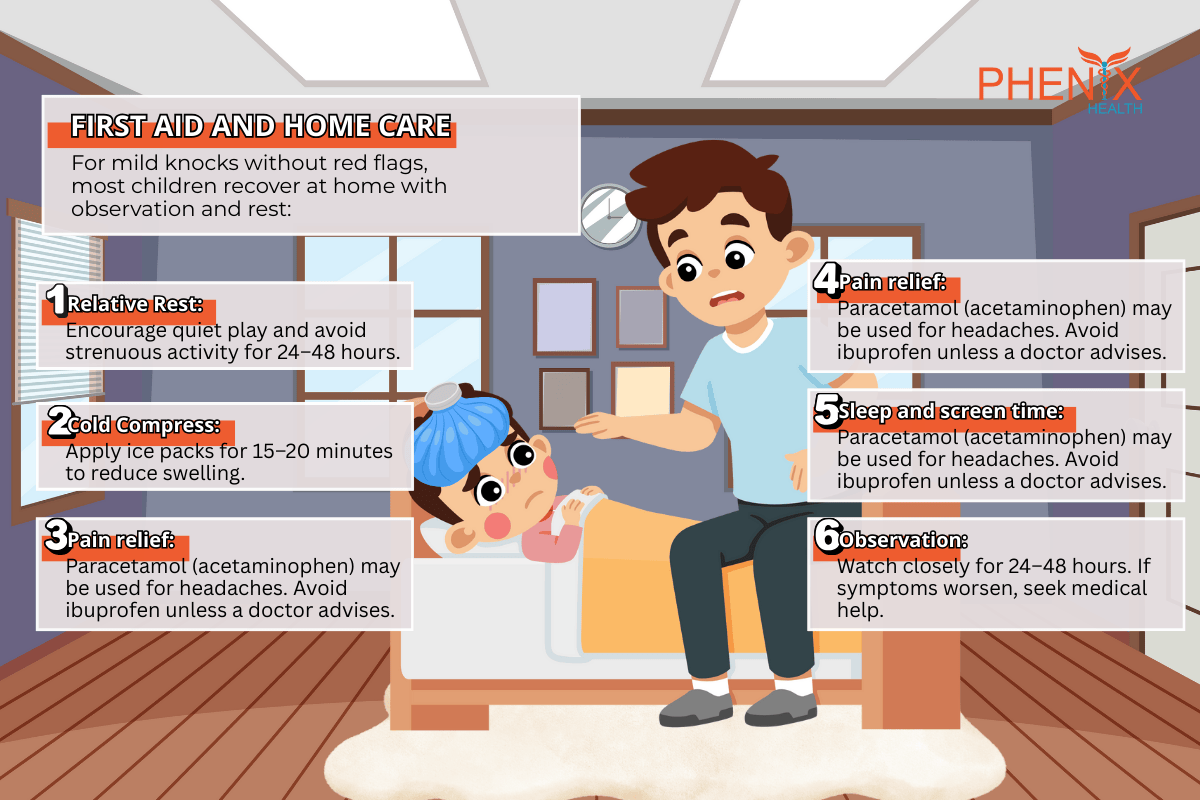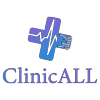A head injury in children can be frightening for any parent. While most bumps are minor, some head injuries in children require urgent care. Knowing the difference between a mild concussion and a serious head injury can help you act quickly and confidently.
This article explains symptoms to watch for, common causes, home care strategies, and when to seek medical help, including how telehealth can support families.
What is a Head Injury in Children?
A head injury occurs when the scalp, skull, or brain is harmed. These range from:
- Concussion: a mild brain injury affecting function.
- Contusion: a bruise on the brain.
- Skull fracture: a break in the bone, sometimes linked to brain bleeding or swelling.
Most head injuries are mild, but some can cause long-term impairments in speech, vision, or motor function. Boys, teens, and children who are active in outdoor play or contact sports are at a higher risk, especially during the spring and summer.
Common Causes of Head Injury
According to the Australian Institute of Health and Welfare (AIHW), injuries are one of the leading reasons children present to the hospital. Head injuries often result from everyday activities and accidents, and while many are minor, some can have serious consequences.
- Falls: from beds, stairs, or playground equipment.
- Sports and play: collisions in football, rugby, or cycling without helmets.
- Motor vehicle accidents: as passengers, pedestrians, or cyclists.
- Child abuse: including abusive head trauma.
Simple precautions, such as wearing helmets, using seatbelts, creating safe play environments, and educating coaches on concussion protocols, can prevent many injuries.
Symptoms to Watch For
The Royal Children’s Hospital Melbourne notes that symptoms of head injury can range from very mild to severe, and it’s important for parents to recognise the difference. Early recognition ensures children receive the right care without delay.
Mild head injury symptoms may include:
- Headache or tenderness
- Dizziness or blurred vision
- Nausea or vomiting (once)
- Irritability or confusion
- Fatigue or sleepiness
- Difficulty concentrating
Red flags for serious head injury include:
- Worsening headache
- Repeated vomiting
- Loss of consciousness, seizures, or convulsions
- Slurred speech or unusual behaviour
- Unequal pupils, blurred or double vision
- Clear fluid or blood from the nose or ears
- Weakness, numbness, or difficulty walking
- Excessive drowsiness or trouble waking
If your child shows any of these warning signs, call 000 or go to the emergency department immediately.
First Aid and Home Care
According to the American Academy of Pediatrics, most mild head injuries in children can be safely managed at home with careful observation and simple first aid. Parents play a key role in ensuring recovery and spotting any changes that may require medical attention.
For mild knocks without red flags, most children recover at home with observation and rest:
- Relative rest: Encourage quiet play and avoid strenuous activity for 24-48 hours.
- Cold compress: Apply ice packs for 15–20 minutes to reduce swelling.
- Pain relief: Paracetamol (acetaminophen) may be used for headaches. Avoid ibuprofen unless a doctor advises.
- Sleep and screen time: Allow rest, limit screen use, and check your child regularly for any changes.
- Observation: Watch closely for 24-48 hours. If symptoms worsen, seek medical help.

When to Seek Medical Help
As outlined by Johns Hopkins Medicine, some head injuries in children require urgent medical attention. Recognising the warning signs early can make a critical difference in outcomes.
See a doctor urgently if your child:
- Lost consciousness, even briefly
- Has repeated vomiting, seizures, or worsening headache
- Shows confusion, slurred speech, or unusual irritability
- Has bleeding or fluid from the ears/nose
- Cannot be woken easily or appears excessively sleepy
Doctors may perform a physical exam, take a symptom history, and recommend tests such as X-rays, CT scans, or MRIs. In more severe cases, neuropsychological testing or intracranial pressure (ICP) monitoring may be used.
Prevention Tips for Parents
- Ensure helmets are worn for cycling, skateboarding, or contact sports.
- Use age-appropriate car seats, boosters, and seat belts.
- Supervise play in safe environments and discourage risky behaviour.
- Advocate for concussion action plans in schools and sports clubs.
- Teach children safe play habits and respect for rules.
Telehealth Support for Parents
Not every bump needs an emergency visit, but parents often feel unsure. Telehealth provides fast access to a GP from home. Through Phenix Health’s online appointments, doctors can:
- Assess symptoms and risk
- Advise whether to observe at home or seek urgent care
- Provide guidance on rest, pain relief, and return to school or sport
This is especially useful for after-hours concerns or mild-to-moderate symptoms where reassurance and advice can make all the difference.
Book an online GP appointment or learn more about our telehealth services at Phenix Health.
Quick Action: When Telehealth Can Help
Head injury in children are common, but knowing the signs helps parents act quickly and safely. Mild bumps usually recover well with rest and observation, while serious symptoms need urgent medical attention. Telehealth offers families an accessible way to get professional guidance without delay.
If you’re ever uncertain about your child’s head injury, consider a Phenix Health telehealth consultation. A quick online appointment can provide peace of mind and ensure your child receives the right care at the right time.






Phenix Health delivers online health services 24/7 provided by Australian doctors and healthcare professionals.